Editor’s note: Based in Atlanta, Mike Mabey is global lead for e-commerce and omnichannel strategy, and Elizabeth Kadrich is global lead for online shopping environment research, at research firm SKIM.
Online retailers are often the starting point for today’s consumers, whether they end their shopper journey online or in store. A recent study shows that in the U.S., 68% of consumers began their search with Amazon. However, gathering behavioral data related to online and mobile shopping is challenging – especially in the alcohol category.
Consumers peruse Amazon not only to shop but to find product information, compare prices and read peer reviews. Their shopper journey may or may not end on Amazon, but the retail giant's influence on online shoppers is undeniable.
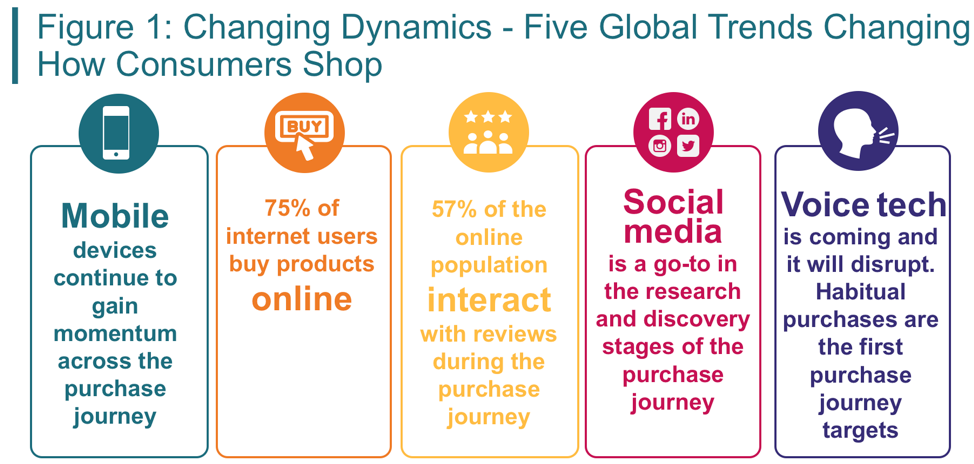
These observations are summarized from The State of Ecommerce, GlobalWebindex's biannual report on the latest trends in online commerce, 2018.
Many brands and marketing researchers are playing catch-up in an e-commerce world where the 800-pound gorilla has access to an unprecedented volume and array of shopper data and insights. This is especially true in the alcohol beverage space due to a number of specific challenges including state-level regulations and the large number of general, specialty and small retailers. As a result, retailers have been especially slow at adopting an e-commerce platform.
Challenges unique to the alcohol category
E-commerce, in the alcohol category, has many CPG-like characteristics, however, the nuances and challenges make it a different environment. Failing to address its nuances can negate what might otherwise be a successful e-commerce strategy.
Recently, SKIM conducted a study on behalf of a global producer and marketer of beer, wine and spirits to understand how to overcome four of the key challenges facing the alcohol category online:
- Mobile-friendly has become mobile-first. With nearly 74% of online purchases happening on mobile devices, what does a mobile-first strategy look like in the alcohol category?
- Lost sales are linked to poor online presentation. One-third of online alcohol shoppers who purchased less than they planned said they could not find the item, brand or pack size they wanted.
- Many retail partners in the alcohol category are not competitive online. Online sales currently represent less than 1% of total alcohol industry sales, far behind other CPG categories. As a highly regulated industry, alcohol brands are limited in how they can engage with retailers, sell and ship their products. However, they’re experiencing rapid growth (30%+) as click and collect offerings and online adoption grow at traditional retailers.
- Brands struggle to communicate variants in an e-commerce environment. Beer, wine and spirits offer a vast array of variants that are not easily communicated in traditional online images. For example, one vodka brand alone has 75 different SKUs including flavors and package sizes.
Marketing researchers often defer to mobile-ready hero image guidelines developed by researchers at the University of Cambridge in collaboration with global consumer goods company Unilever. While that’s a good starting place, the standard CPG rules related to brand, format, variant and size selection don’t account for the nuances of the alcohol category.
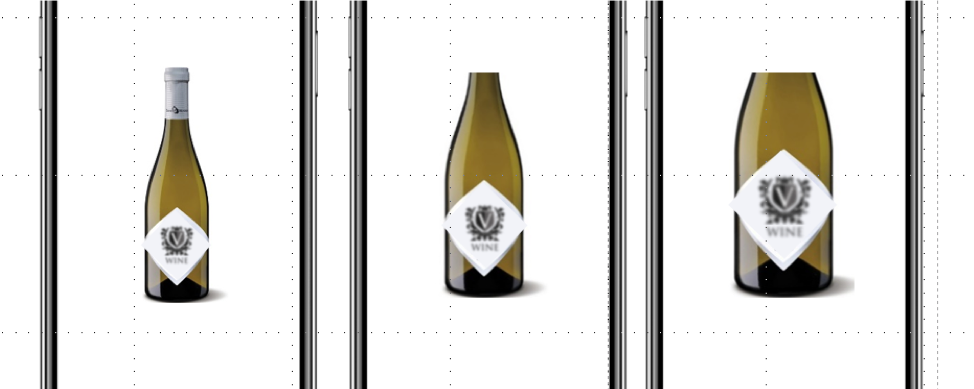
For example, when designing online product images for wine, marketers may not know if the image itself should be cropped to show details that wine shoppers find compelling, such as the shape of the bottle, the design of the label and whether it has a cork or screw top.

When determining hero image callouts, which product attributes are most important for wine shoppers when shopping online? Color? Varietal? Size?
Confidential testing
Using a confidential online testing environment that replicates a real shopping page, researchers can imitate an e-commerce site for any major retailer. For this study, researchers chose an Amazon page. Learnings were transferable to other online retailers such as Meijer, Walmart and Total Wine.
This particular client wanted to first optimize its product images across online retailers. Why not test live on various retailer websites?
- E-commerce is a highly visual experience, so introducing test product images to a live site can create confusion for shoppers
- A live site is not secure and confidential, so test images can proliferate online
- Many online retailer platforms are unable or unwilling to provide the level of transparency and reporting required for successful image testing and optimization
A website replication platform allows subjects to experience and make choices as they would in real life while researchers conduct choice-based conjoint analysis.
The study deployed four different exercises: virtual shopping, findability, KPIs and clickables.
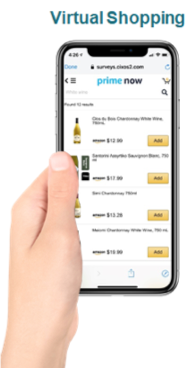 1. Virtual shopping trips. Respondents completed two virtual shopping trips in an Amazon Prime Now replicated mobile environment. On each shopping trip, respondents saw 12 products in one alcohol category. Product images and the order of products varied in each shopping exercise. Virtual shopping is designed to measure consideration, meaning the product was selected to view more details, and conversion, meaning the product was added to cart and “purchased” in checkout.
1. Virtual shopping trips. Respondents completed two virtual shopping trips in an Amazon Prime Now replicated mobile environment. On each shopping trip, respondents saw 12 products in one alcohol category. Product images and the order of products varied in each shopping exercise. Virtual shopping is designed to measure consideration, meaning the product was selected to view more details, and conversion, meaning the product was added to cart and “purchased” in checkout.
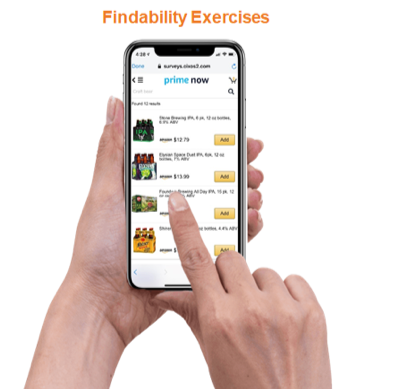 2. Findability exercises. Respondents completed two separate shopping exercises, asking them to purchase the specific product being tested. The first exercise featured the control image and the second showed a randomly selected hero image. The test products were positioned in the middle of the category search page. The findability score is based on how quickly the respondent can find each hero image, indicating how well the image breaks through the clutter in an e-commerce environment.
2. Findability exercises. Respondents completed two separate shopping exercises, asking them to purchase the specific product being tested. The first exercise featured the control image and the second showed a randomly selected hero image. The test products were positioned in the middle of the category search page. The findability score is based on how quickly the respondent can find each hero image, indicating how well the image breaks through the clutter in an e-commerce environment.
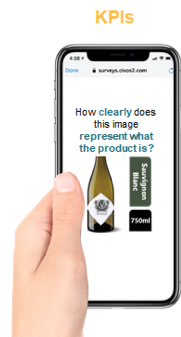 3. KPIs. In the evaluation phase of the study, consumers were presented with two random hero images, which they had to assess on two KPIs: clarity and relevance of information. Respondents were also asked to choose the most and least useful image when shopping online.
3. KPIs. In the evaluation phase of the study, consumers were presented with two random hero images, which they had to assess on two KPIs: clarity and relevance of information. Respondents were also asked to choose the most and least useful image when shopping online.
4.Clickables. Here respondents were asked to choose which aspects of an image they found most appealing. The exercise included an open-ended question to dig deeper into why they chose that element.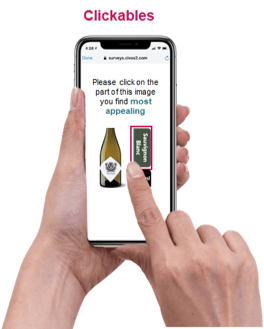
Results and further applications
Using this approach, researchers were able to derive deeper insights into consumer-friendly image guidelines.
Since the client’s portfolio includes subcategories of imported beer, craft beer, liquor and wine, researchers were able to uncover variations among subcategories. For example, craft beer shoppers want to see the style of the beer in the online images. Is it an IPA? A stout? Meanwhile, those details are not as relevant to import and domestic beer shoppers.
Beyond product image optimization, the applications for an online, confidential testing platform of this sort are myriad. They include product detail page content optimization (including video); pricing and bundle optimization; disruptive buying habit scenario testing; and ad impact (e.g., sponsored, display and banner ads) measurement.
Consistent guidelines for digital merchandising
The environment in which consumers make decisions is rapidly changing, and they expect brands and retailers to keep up. Alcohol manufacturers and distributors can help their retailers succeed by providing clear, consistent guidelines for digital merchandising, enabling them to deliver everything shoppers expect from an e-commerce experience: agility, speed and convenience.
